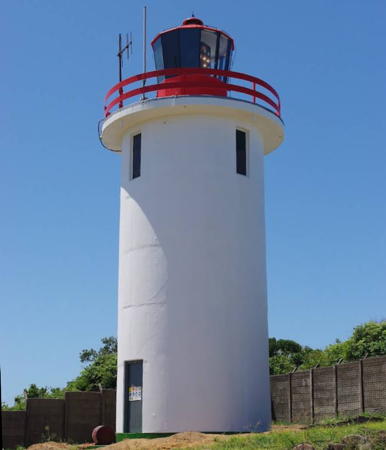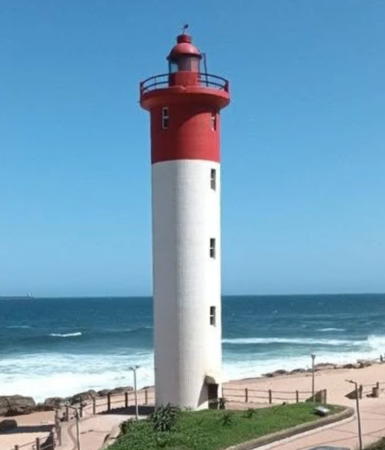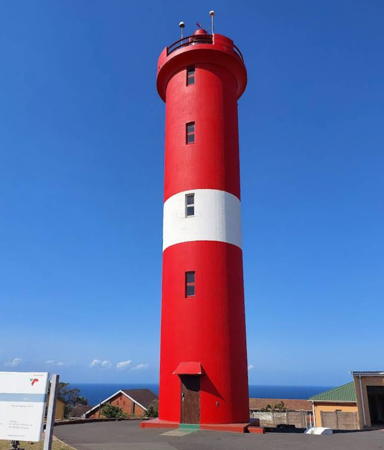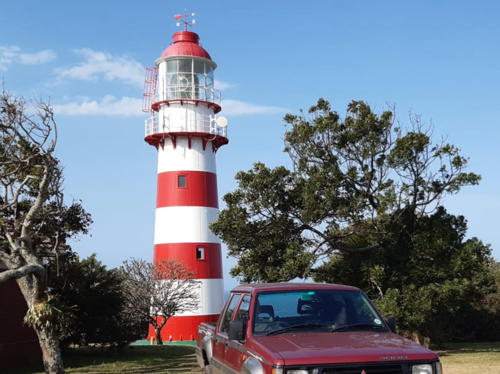The Republic of South Africa occupies the southern end of the African continent, including the famous capes of Good Hope and Agulhas. During the colonial era Dutch and British colonists struggled for many years to control the country, but by the mid 1800s the entire coastline was under British control. As a result South Africa's lighthouse heritage is British.
The country was formed in 1910 as the Union of South Africa, an autonomous British dominion combining the Cape, Transvaal and Natal colonies and the former Orange Free State republic. Full independence was granted in 1931 and the Union became the Republic in 1961.
South Africa is divided into nine provinces and the provinces are divided into districts and municipalities. This page describes lighthouses in the province of KwaZulu-Natal. KwaZulu, "Place of the Zulu," refers to the historic Zulu Kingdom that ruled most of this area, and Natal was a British colony from 1843 to the formation of the Union in 1901. The province was established in 1994 following the end of the apartheid era in South Africa.
Located on the east side of the country, KwaZulu-Natal faces southeast on the Indian Ocean; its principal ports are Richards Bay and Durban. There are also pages for the province of Eastern Cape and the provinces of Western Cape and Northern Cape.
Lighthouses in South Africa are operated by the Lighthouses and Navigational Systems division of the Transnet National Ports Authority (TNPA). Some are still staffed. Some of the larger and more accessible light stations have been developed for tourism by the Transnet business office.
Official languages in South Africa include English, Afrikaans, and nine native African languages. In Afrikaans the word for a lighthouse is vuurtoring; eiland is an island, kaap is a cape, punt is a point of land, baai is a bay, and klip is a rock. In the Zulu language common in KwaZulu Natal indlu yesibani ("house of the lamp") is a lighthouse.
ARLHS numbers are from the ARLHS World List of Lights. Admiralty numbers are from volume D of the Admiralty List of Lights & Fog Signals. U.S. NGA List numbers are from Publication 112.
- General Sources
- Lighthouses of South Africa
- A blog by Joe Viljoen; this valuable site has photos and information on nearly all South African lights.
- Charmaine Blackburn - Lighthouses
- Photos posted on Flickr.com by Ms. Blackburn. Her blog has additional photos.
- Online List of Lights - South Africa - Southeast Coast
- Photos by various photographers posted by Alexander Trabas. Many of the photos for this area are by Don Brotherston, a Johannesburg photographer.
- Leuchttürme in Südafrika
- Photos posted by Bernd Claußen.
- Lighthouses in South Africa
- Photos by various photographers available from Wikimedia.
- World of Lighthouses - South Africa
- Photos by various photographers available from Lightphotos.net.
- Afrikanische Leuchttürme auf historischen Postkarten
- Postcards from the collection of Klaus Huelse.
- GPSNauticalCharts
- Navigation chart information for South Africa.
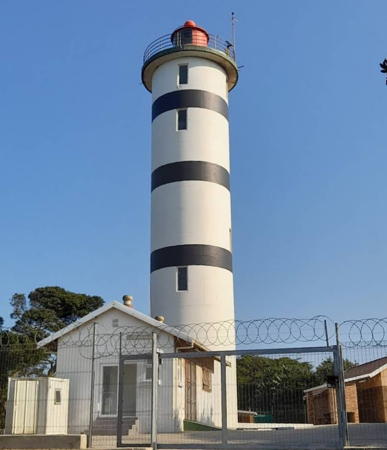
Tugela Bluff Light, Mandini, July 2022
Google Maps photo by Annaleze Lindeque
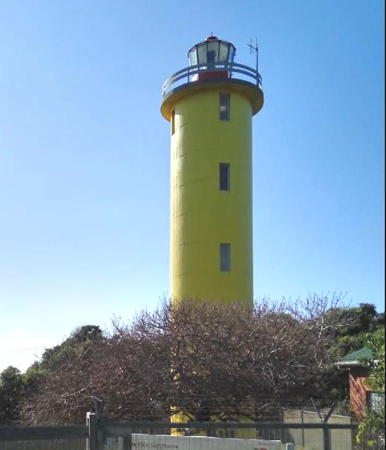
Cape Vidal Light, St. Lucia, September 2017
Google Maps photo by Chris Nagel
